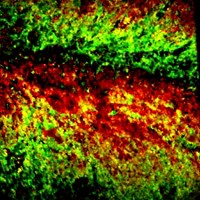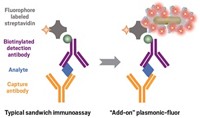Advertisement
Grab your lab coat. Let's get started
Welcome!
Welcome!
Create an account below to get 6 C&EN articles per month, receive newsletters and more - all free.
It seems this is your first time logging in online. Please enter the following information to continue.
As an ACS member you automatically get access to this site. All we need is few more details to create your reading experience.
Not you? Sign in with a different account.
Not you? Sign in with a different account.
ERROR 1
ERROR 1
ERROR 2
ERROR 2
ERROR 2
ERROR 2
ERROR 2
Password and Confirm password must match.
If you have an ACS member number, please enter it here so we can link this account to your membership. (optional)
ERROR 2
ACS values your privacy. By submitting your information, you are gaining access to C&EN and subscribing to our weekly newsletter. We use the information you provide to make your reading experience better, and we will never sell your data to third party members.
Biological Chemistry
Kinase Assay by Mass Spec
New method is simpler and faster than traditional kinase assays
by A. Maureen Rouhi
November 22, 2004
| A version of this story appeared in
Volume 82, Issue 47
ANALYTICAL CHEMISTRY

Peptides immobilized on a surface plus mass spectrometry equals rapid and direct analysis of kinase activities, a new study shows [Angew. Chem. Int. Ed., 43, 5973 (2004)]. Developed by University of Chicago researchers Dal-Hee Min, Jing Su, and Milan Mrksich, the strategy avoids the complications of traditional kinase assays, including use of radioactive labels or antibody binding.
Kinases mediate the phosphorylation of specific substrates. They have many regulatory functions, and assaying kinase activity is key in many research areas, including drug discovery.
Using matrix-assisted laser desorption/ionization time-of-flight mass spectrometry, the Chicago team evaluates kinase activity from the spectra of peptides, immobilized on a gold substrate, before and after exposure to a kinase-mediated phosphorylation. In the after spectrum, the mass peak of the kinase's substrate is replaced by that of the product.
The team applied the method to six kinases. The kinase reaction yielded a mass change of 80, due to addition of a phosphate group to each substrate. Multiple kinase activities can be measured by exposing a peptide array sequentially to different kinases.
The assay also can be used to measure kinase inhibition. Results for the inhibition of the kinase Ab1 by the anticancer drug Gleevec are within the range of values reported in the literature.
"The most significant aspect of our work has been the development of surfaces that allow both quantitative assays of enzyme activity and readout by mass spectrometry," Mrksich says. "These tailored substrates simplify the use of mass spectrometry for analyzing enzymatic activities and therefore move this technique closer to routine use in research laboratories."





Join the conversation
Contact the reporter
Submit a Letter to the Editor for publication
Engage with us on Twitter